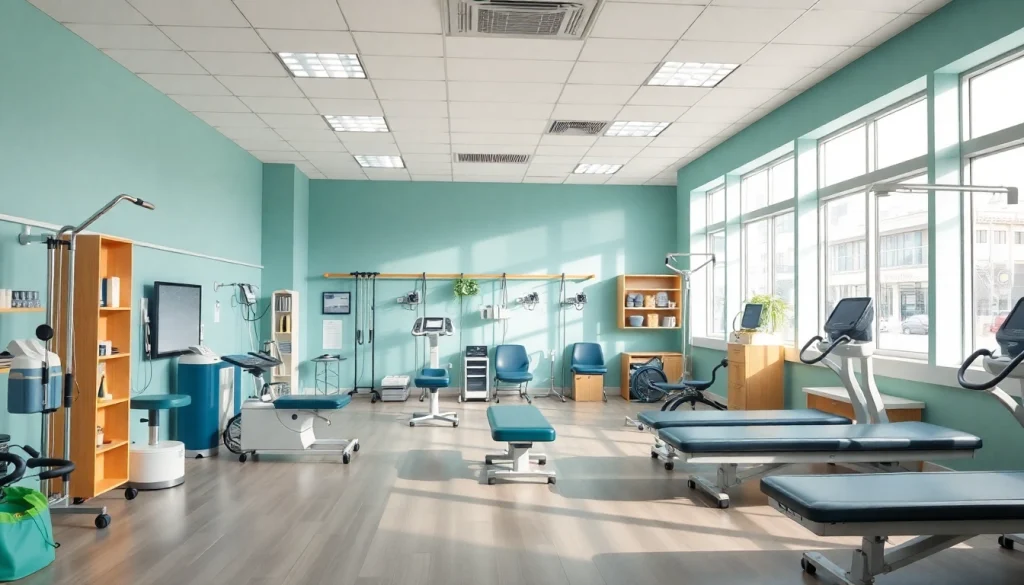Understanding Rehabilitation Equipment
What is Rehabilitation Equipment?
Rehabilitation equipment encompasses a range of devices and tools designed to support individuals in recovering from injuries, surgeries, or incapacitating conditions. It serves a vital role in physical therapy, guiding patients through exercises that promote healing and restore function. Rehabilitation equipment can vary widely, from basic apparatus like weights and resistance bands to advanced technological solutions like robotic assistive devices.
Key Types of Rehabilitation Equipment
Understanding the various types of rehabilitation equipment is crucial for effective recovery. Here are some of the key categories:
- Mobility Aids: Devices such as wheelchairs, walkers, and canes that assist with movement.
- Strength Training Equipment: Tools like resistance bands, dumbbells, and exercise machines focus on enhancing muscle strength.
- Balance and Coordination Aids: Items such as balance boards and stability balls to help improve stability and coordination.
- Therapeutic Modalities: Equipment that uses heat, cold, or electrical stimulation to manage pain and facilitate healing.
- Sports Rehabilitation Devices: Tools specifically designed for athletes to aid in recovering from sports-related injuries.
Importance of Choosing the Right Equipment
The selection of appropriate rehabilitation equipment can significantly impact recovery outcomes. Using equipment not suited to an individual’s specific condition may hinder progress and lead to frustration. Therefore, it’s essential to assess a patient’s needs and goals carefully. Collaborating with healthcare professionals helps ensure that the selected tools align with individual rehabilitation plans.
Why Choose a Reliable Rehabilitation Equipment Supplier?
Quality Assurance Standards
When selecting a Rehabilitation Equipment Supplier, quality assurance is a top priority. Trustworthy suppliers adhere to rigorous industry standards and regulations, ensuring that their products are safe and effective. This assurance involves product testing, certifications, and compliance with health and safety guidelines.
Customer Support and Expertise
A reliable supplier not only provides equipment but also offers essential customer support. This support can take many forms, including expert advice on product selection, setup assistance, and ongoing maintenance tips. Their expertise can guide customers through the complexities of rehabilitation equipment, making the selection process much more manageable for both healthcare providers and patients.
Competitive Pricing Strategies
Cost is often a significant consideration when choosing rehabilitation equipment. A reputable supplier will offer competitive pricing, making high-quality rehabilitation solutions accessible without sacrificing quality. Transparent pricing policies and value-added services can also lead to better overall customer satisfaction.
Features to Look for in Rehabilitation Equipment
Durability and Safety
When investing in rehabilitation equipment, durability and safety are imperative. Patients rely on this equipment to facilitate recovery, and the last thing needed is a malfunction. Durable materials not only extend the life of the equipment but also ensure safety during use. Regular safety assessments and adherence to manufacturing standards are essential aspects to consider.
User-Friendly Design
A user-friendly design enhances the rehabilitation experience, encouraging consistent use. Equipment should be easy to operate, with clear instructions for use. Ergonomic designs that cater to a range of abilities can help individuals feel more comfortable and confident during their recovery process.
Technological Integration
Modern rehabilitation equipment increasingly incorporates technology, offering features such as feedback mechanisms and customization options. Devices equipped with sensors can track progress and adjust resistance based on real-time performance. These integrations not only enhance effectiveness but also engage patients in their rehabilitation journey by making exercises more interactive.
Best Practices for Using Rehabilitation Equipment
Training and Instructional Guidelines
Effective use of rehabilitation equipment begins with proper training and understanding how to use each device appropriately. Professionals should provide comprehensive instructional guidelines, ensuring that patients know how to use the equipment safely and effectively. This foundation sets the stage for successful therapy outcomes.
Monitoring Progress and Adjustments
Monitoring progress is crucial in rehabilitation. Regular assessments can help therapists determine if the equipment is meeting the patient’s needs. Adjustments to the rehabilitation plan, including equipment use, may be necessary based on these evaluations. This dynamic approach ensures that recovery remains on track and caters to evolving patient requirements.
Incorporating Equipment into Therapy Routines
Integrating rehabilitation equipment into daily therapy routines enhances adherence and outcomes. It is beneficial for patients to maintain a consistent schedule that includes exercises with rehabilitative tools. Varied routines that incorporate different pieces of equipment can prevent boredom and improve overall engagement in the rehabilitation process.
Evaluating the Effectiveness of Rehabilitation Equipment
Setting Measurable Goals
For rehabilitation efforts to be effective, establishing measurable goals is paramount. By defining clear benchmarks, patients and therapists can gauge progress accurately. These goals should be specific, achievable, and relevant to the individual’s recovery process. Regular reviews of these objectives allow for timely adjustments to the treatment plan.
Feedback from Patients and Practitioners
Feedback is a vital component in evaluating the effectiveness of rehabilitation equipment. Gathering insights from both patients and practitioners provides a comprehensive view of the equipment’s performance and efficiency. This feedback loop is crucial for continuous improvement and can help inform future equipment purchases and training processes.
Long-term Benefits of Proper Equipment
Investing in proper rehabilitation equipment yields long-term benefits for both patients and healthcare providers. Enhanced recovery outcomes, improved patient satisfaction, and reduced long-term healthcare costs are just a few advantages. Understanding these benefits underscores the importance of choosing a trusted rehabilitation equipment supplier who prioritizes quality and support.
You may also like
-
Effective Dental Marketing Strategies to Attract New Patients
-
Effective Strategies for Dealing with Grief: Finding Comfort and Healing
-
Revitalize Your Look: The Benefits of Crows Feet Botox Treatment
-
Boost Your Vitality with the Right Energy Vitamin Choices
-
Maximize Your Health with Effective Vitamin Boosters for Optimal Wellness
